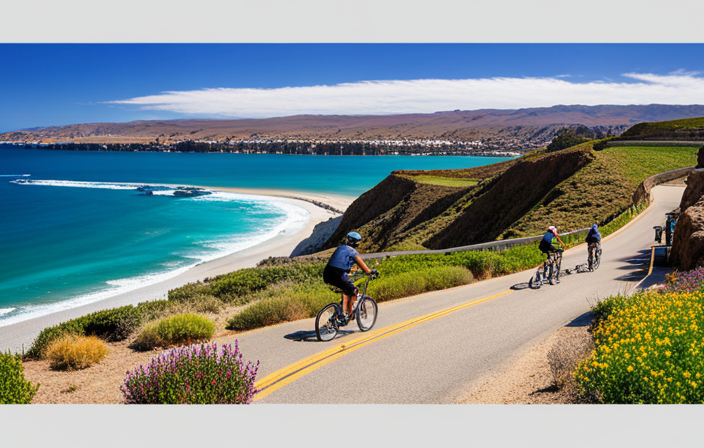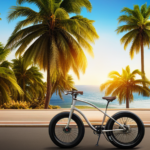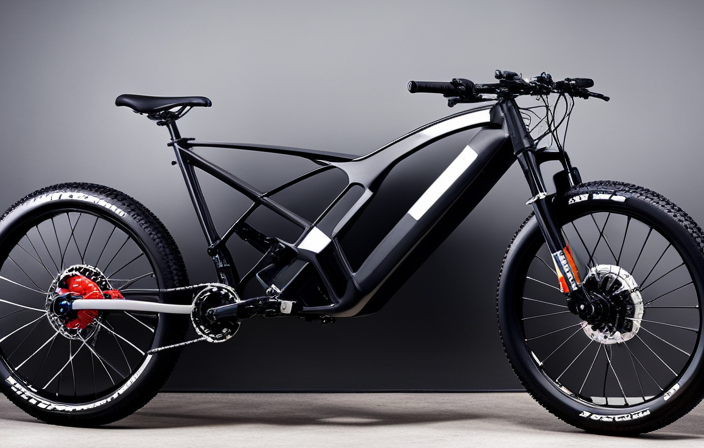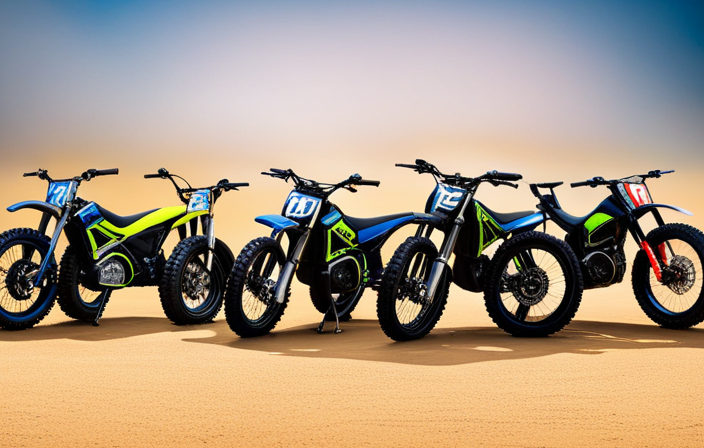In California, the regulations on electric bicycles attract attention from numerous riders. It is important to have a clear grasp of the classifications, age restrictions, and safety rules in order to ride in compliance and enjoy a safe riding experience.
From navigating public roads and trails to knowing the rules in state and national parks, there are various considerations to keep in mind. In this article, we will delve into the details of the California law of electric bikes, covering everything from insurance considerations to penalties for non-compliance.
Key Takeaways
- Liability coverage may apply in accidents involving e-bikes, and riders found at fault may be held liable for damages.
- E-bike modifications must comply with California’s regulations, including considerations for performance enhancements, maintenance, lighting and reflector requirements, and braking system modifications.
- Non-compliance with e-bike regulations can result in hefty fines and legal consequences, putting riders and others at risk.
- It is important to follow California’s regulations for e-bike modifications to avoid penalties and fines, uphold safety, and stay informed about the law.
Classifications of Electric Bikes in California
The classifications of electric bikes in California are determined by their top speed and whether they have a pedal-assist or throttle-only system. These classifications are important because they determine where and how electric bikes can be ridden.
There are three main classes of e-bikes in California. Class 1 e-bikes have a pedal-assist system and a top speed of 20 mph. Class 2 e-bikes also have a top speed of 20 mph, but they can be operated using a throttle. Class 3 e-bikes have a pedal-assist system and a top speed of 28 mph.
These classifications are regulated by the California Vehicle Code and are important for both e-bike riders and law enforcement officers to understand.
Moving on to the age and licensing requirements for e-bike riders, it is important to note that…
Age and Licensing Requirements for E-Bike Riders
To ride an e-bike in California, there are a few key points to keep in mind. First, there are age restrictions. Riders must be at least 16 years old to operate a Class 3 e-bike, which can reach speeds of up to 28 miles per hour. However, there are no age restrictions for operating Class 1 and Class 2 e-bikes, which have lower top speeds.
Next, let’s talk about licensing requirements. Unlike motorcycles or cars, e-bike riders in California do not need a driver’s license or special permit. This makes e-bikes accessible to a wider range of individuals, including teenagers and those who don’t have a driver’s license.
Now, let’s discuss helmet and safety regulations. While California law does not require e-bike riders to wear helmets, it is highly recommended for safety. Wearing a helmet can protect against head injuries in the event of an accident or fall.
In conclusion, it is important to prioritize your well-being while riding an e-bike.
Helmet and Safety Regulations
When riding an e-bike, it’s crucial to prioritize your safety by following helmet and safety regulations.
In California, helmet enforcement for e-bikes is mandatory for riders under the age of 18. It is highly recommended for all riders, regardless of age, to wear a helmet while operating an e-bike.
Safety education is also an essential aspect of e-bike riding in California. It is important for riders to be aware of the rules and regulations specific to e-bikes, such as speed limits and bike lane usage. Additionally, riders should be knowledgeable about the proper use of signals and the importance of keeping a safe distance from pedestrians and other vehicles.
By adhering to these regulations and staying informed, riders can ensure a safe and enjoyable experience while riding their e-bikes on public roads and trails without compromising the safety of themselves and others.
Rules for Riding on Public Roads and Trails
Make sure you are aware of the rules for riding on public roads and trails, including speed limits and bike lane usage, to ensure a safe and enjoyable experience. When riding an electric bike in California, it is important to follow the same rules as traditional bicycles. The state has specific regulations regarding e-bike usage on public roads and trails. For example, electric bikes are allowed on bike lanes and paths unless otherwise stated by local ordinances. They must also adhere to the posted speed limits, which are typically lower than those for motor vehicles. Additionally, it is worth noting that some cities in California have e-bike rental services and e-bike sharing programs available for convenient and eco-friendly transportation. These options provide a great opportunity to explore the area while reducing your carbon footprint. Now let’s transition into the subsequent section about e-bike regulations in state and national parks.
E-Bike Regulations in State and National Parks
State and national parks have specific regulations in place regarding the use of e-bikes. These regulations vary from park to park, but generally, e-bikes are allowed in most state and national parks as long as they are operated in a safe and responsible manner. Some parks even have designated e-bike trails to accommodate these types of vehicles.
However, it is important to note that e-bike rental services may not be available in all parks, so it is advisable to check beforehand. Additionally, the environmental impact of e-bikes is a concern in these protected areas. Parks strive to balance the desire for recreational opportunities with the need to preserve the natural environment.
As we move on to the next section about battery and charging requirements, it is crucial to understand how these regulations contribute to the overall management of e-bikes in state and national parks.
Battery and Charging Requirements
It is important to understand the battery and charging requirements for e-bikes in state and national parks. Here are four key things to know about battery lifespan and charging infrastructure:
-
Battery lifespan: E-bike batteries typically last between 3 to 5 years, depending on usage and maintenance. It is important to regularly check the battery’s health and replace it when necessary to ensure optimal performance.
-
Charging infrastructure: State and national parks are increasingly providing charging stations for e-bikes. These stations allow riders to conveniently charge their batteries while enjoying the park’s amenities.
-
Charging time: The time it takes to fully charge an e-bike battery varies depending on the battery’s capacity and the charging station’s power output. Generally, it can take anywhere from 2 to 6 hours for a full charge.
-
Portable chargers: Some e-bike models come with portable chargers, allowing riders to charge their batteries even when no charging station is available. These chargers can be particularly useful for longer rides or when exploring remote areas.
Understanding the battery and charging requirements ensures a smooth and enjoyable e-bike experience in state and national parks.
Moving on to insurance and liability considerations, it is important to be aware of the potential risks and coverage options when riding an e-bike in these settings.
Insurance and Liability Considerations
When it comes to e-bike riders, the question of whether insurance coverage is necessary is a key consideration. In the event of accidents or collisions, liability also becomes an important issue to address.
As an e-bike rider myself, I understand the importance of being well-informed about these factors to ensure both my safety and financial protection.
Whether e-bike riders need insurance coverage
E-bike riders in California aren’t required to have insurance coverage. However, it’s important for riders to understand the potential risks and liabilities they may face on the roads.
Just like any other vehicle, e-bike riders are expected to follow traffic laws and regulations. Failure to do so can result in penalties and fines.
Additionally, in the event of an accident or collision, e-bike riders may face personal injury claims if they are found at fault. This means that if a rider causes harm or damage to another person or their property, they may be held responsible for the resulting expenses.
Therefore, while insurance coverage isn’t mandatory, it’s highly recommended for e-bike riders to protect themselves and their assets in case of unforeseen incidents.
Moving on to the subsequent section about liability in the event of accidents or collisions…
Liability in the event of accidents or collisions
Liability for accidents or collisions can be a concern for e-bike riders. It’s important to understand the legal implications and liability coverage when riding an electric bike in California.
In the event of an accident, the liability coverage of the at-fault party may come into play. If the e-bike rider is found to be at fault, they may be held liable for any damages or injuries caused. This could result in financial consequences for the rider, including medical expenses and property damage.
It’s advisable for e-bike riders to consider obtaining liability insurance to protect themselves in case of accidents. This insurance can provide coverage for bodily injury and property damage caused by the rider.
Moving forward to the next section about e-bike modifications and customizations, it’s important to understand the legal implications of making any changes to your electric bike.
E-Bike Modifications and Customizations
To customize your electric bike in California, you can make modifications as long as they comply with the state’s regulations. Here are some important considerations for modifying your e-bike:
-
E-bike performance: You can enhance your e-bike’s performance by upgrading components such as the motor, battery, or controller. However, it’s crucial to ensure that the modifications don’t exceed the legal limits for speed and power.
-
E-bike maintenance: Customizations should also take into account the impact on maintenance. For example, if you modify the battery, you may need to be mindful of charging requirements or compatibility with the existing charging system.
-
Lighting and reflectors: Adding extra lights and reflectors can improve visibility and safety, especially when riding at night. Make sure the modifications comply with California’s requirements for lighting equipment.
-
Braking system: Upgrading your e-bike’s brakes can enhance stopping power and safety. Ensure that the modifications meet the state’s standards for braking performance.
-
Frame modifications: Altering the frame to accommodate additional accessories or cargo can be done, but it must not compromise the structural integrity of the e-bike.
When making modifications to your e-bike, it’s essential to follow California’s regulations to avoid penalties and fines for non-compliance.
Penalties and Fines for Non-Compliance
When it comes to modifying and customizing electric bikes in California, it’s important to be aware of the penalties and fines that can be imposed for non-compliance. The state has specific laws and regulations in place to ensure the safety and integrity of these vehicles. Failure to adhere to these guidelines can result in hefty fines and even legal consequences.
It’s crucial to understand the restrictions on modifications such as increasing the bike’s speed limit or altering its motor size. Violating these regulations can not only put you at risk but also compromise the safety of others on the road.
Therefore, it’s essential to stay informed about the penalties and fines associated with non-compliance to avoid any unnecessary trouble. As we move forward, let’s explore the available resources for further information and updates on California’s electric bike laws.
Resources for Further Information and Updates
For more information and updates on regulations and guidelines for modifying and customizing electric bikes in California, there are various resources available to stay informed. Some of the key resources include:
-
California Department of Motor Vehicles (DMV): The DMV provides information on the legal requirements for electric bikes in California, including registration and licensing.
-
California Highway Patrol (CHP): The CHP is responsible for enforcing e bike regulations and ensuring public safety on the roads.
-
California Bicycle Coalition: This organization promotes safe and responsible e bike use through advocacy, education, and public awareness campaigns.
-
Local City and County Websites: Many local government websites provide information on local e bike laws and regulations specific to their jurisdiction.
-
Electric Bike Manufacturer Websites: Manufacturers often provide updates and resources on e bike regulations to help their customers stay compliant.
Staying informed through these resources can help ensure that riders are aware of the latest regulations and guidelines for electric bike use in California.
Frequently Asked Questions
Can I ride my electric bike on the sidewalk in California?
I cannot ride my electric bike on the sidewalk in California. This is due to safety concerns. It is important to prioritize the safety of pedestrians and avoid any potential accidents or collisions.
Are there any restrictions on the speed at which I can ride my electric bike?
Yes, there are restrictions on the speed at which I can ride my electric bike in California. It is important for electric bike safety that I adhere to the regulations on electric bike speed set by the state.
Do I need a driver’s license to ride an electric bike in California?
You don’t need a driver’s license to ride an electric bike in California unless you are under 16 years old. However, it’s important to note that electric bikes are subject to certain speed restrictions.
Are there any specific requirements for the type of helmet I need to wear while riding an electric bike?
There are specific helmet requirements for riding an electric bike in California. The type of helmet you need to wear should meet safety standards and provide adequate protection for your head while riding.
Can I ride my electric bike in designated bike lanes in California?
Yes, you can ride your electric bike in designated bike lanes in California. It is important to follow riding etiquette and be aware of other cyclists. Electric bikes offer numerous benefits, such as reducing carbon emissions and providing a convenient mode of transportation.
Conclusion
In conclusion, navigating the California law of electric bikes can be like traversing a winding road through the majestic Sierra Nevada mountains. It is crucial to understand the classifications, requirements, and regulations to ride with confidence and avoid potential fines.
Just as a skilled cyclist gracefully pedals through challenging terrain, so too can we navigate the legal landscape of e-bikes. By staying informed and adhering to the laws, we can enjoy the freedom and thrill of electric biking while ensuring the safety of ourselves and others.
















